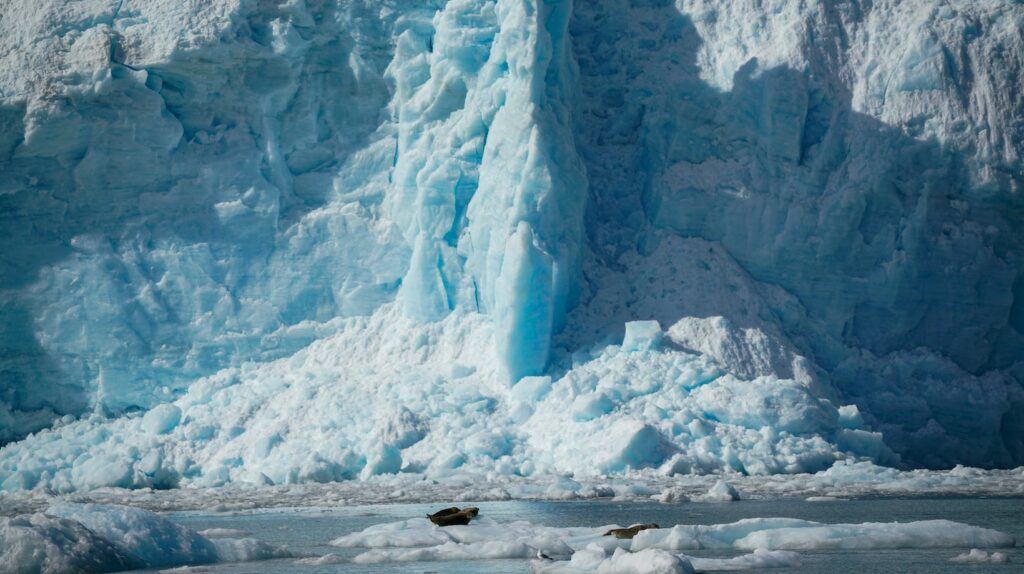
What is the Pleistocene Ice Age
Dubbed as one of Earth’s major ice ages, the Pleistocene epoch marked a significant phase in our planet’s history. It involved a series of cyclical periods of glaciation, with massive glaciers and vast ice sheets covering most of the northern hemisphere. This glacial period left numerous visible impacts on our planet’s surface. These include various landforms like moraines, eskers, and drumlins, which can still be seen and studied today. This epoch is characterized not only by extensive ice coverage but also by the evolution and expansion of modern humans, making it a vital chapter in the story of our species.
The Pleistocene Epoch is usually stated to have started 2.6 million years ago, with its end marked around 11,700 years before the present day, with the advent of the current interglacial period – the Holocene epoch. It’s important to grasp that while the term “Ice Age” might evoke images of a continuous, uniformly freezing climate, the Pleistocene was in fact characterized by fluctuations. Though glaciation was a dominant feature, interglacial periods of warmer climate also factored in cyclically throughout this epoch. During these interglacials, temperatures could climb almost to contemporary levels, causing significant ice melt and subsequent sea-level rise.

Causes of the Pleistocene Ice Age
As we delve deeper into the tapestry of Earth’s history, we explore what prompted the Pleistocene Ice Age. Unspooling past this key geological epoch, it becomes apparent that it was shaped primarily by three influential factors: Orbital Variations, Atmospheric Composition, and Continental Drift.
Orbital Variations
Fundamentally steering the Pleistocene Ice Age were the long-term Orbital Variations known as Milankovitch Cycles. These cycles, named after the Serbian astronomer who studied them, subtly affect the amount of sunlight Earth receives. Over thousands of years, these changes significantly impact our planet’s climate.
Atmospheric Composition
The Atmospheric Composition of our planet played a key role in instigating the Pleistocene Ice Age. Gaseous changes, particularly in the concentrations of carbon dioxide and methane – greenhouse gases essential for trapping heat within Earth’s atmosphere – can trigger significant climatic shifts. Lower levels of these gases during the Pleistocene would have enabled more heat to escape from Earth’s atmosphere, promoting worldwide cooling and, ultimately, glaciation.
Continental Drift
Our third character in this climatic drama is Continental Drift, a slow-moving but relentless actor on the geological stage. Over millions of years, the gradual shifting and reshuffling of the Earth’s tectonic plates alter global wind and ocean circulation patterns, influencing the planet’s long-term climate.
During the Pleistocene epoch, the positioning of continents at high latitudes favored the build-up of ice sheets. Notably, the closure of the Isthmus of Panama around 3 million years ago drastically reconfigured Earth’s ocean currents, contributing significantly to the cooling trend leading to the Ice Age.
Which of the Following is Not True Concerning the Pleistocene Ice Age.
The Pleistocene Ice Age shaped our earth and its ecosystems dramatically throughout its span. Delving into the characteristic features of this period offers clues into its profound impact.
Glaciation
Glaciation is one of the defining aspects of the Pleistocene Ice Age. Large parts of the world were subject to extensive glaciation, forming valley glaciers and continental glaciers. These ice bodies had a profound influence on Earth’s topography, gouging deep valleys, sweeping mountain peaks to form arêtes, and depositing vast quantities of rocks and soil as till or moraine.
Several glaciation cycles took place during this epoch, separated by warmer interglacial periods. The series of glaciation events not only scarred the landscape but also played a vital role in biodiversity and survival strategies of early humans.
Ice Sheets and Ice Caps
During the Pleistocene Ice Age, the growth, spread, and recession of ice sheets and ice caps were remarkable occurrences. Massive ice sheets, far broader than glaciers, formed extensive ice fields. They covered much of North America, Eurasia, and South America.
Ice caps, covering less than 50,000 square kilometers, also appeared in various locations, such as Greenland and some Arctic Archipelago regions.
Permafrost
Apart from glaciers and ice sheets, the Pleistocene Ice Age witnessed the widespread presence of permanently frozen ground – known as permafrost. Extending to depths of up to several hundred meters, permafrost was a silent yet potent player in the Ice Age symphony.
We can’t overlook the Pleistocene Ice Age’s profound influence on biodiversity and species evolution. Sea level and climate changes, along with adaptations in flora and fauna, were defining moments in life’s evolution on Earth. It’s this Ice Age that has sculpted the world we’re familiar with today. A deeper understanding of this period not only enhances our knowledge of the past but also equips us better to predict and manage future climatic events.










